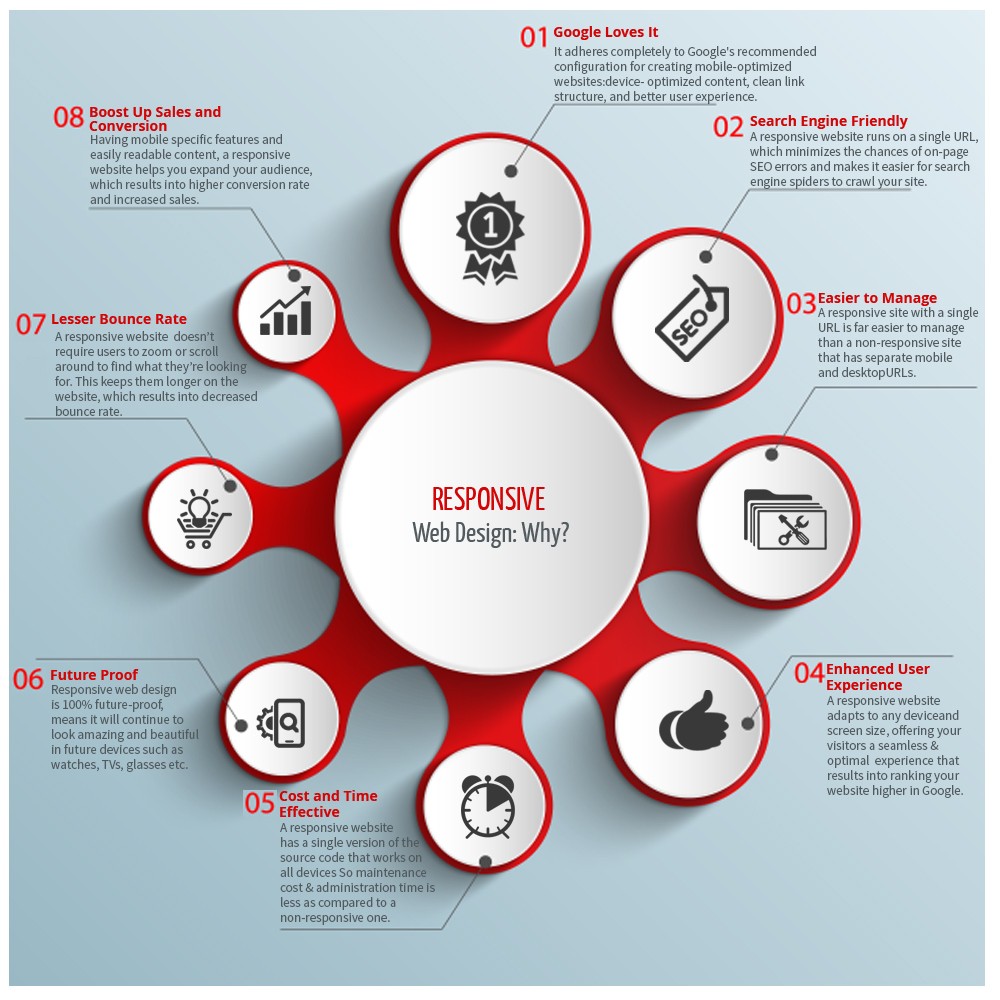Fundamental Facets Of Web Design: Guidelines For Developing A User-Centric Website
Fundamental Facets Of Web Design: Guidelines For Developing A User-Centric Website
Blog Article
Short Article Writer-Hovmand Skinner
When it pertains to internet site style, making sure user-friendliness is key. From relationship to search engine optimization to structured navigating, every component plays an important role in developing a website that caters to your audience's needs. Yet what regarding the finer details that can make or damage a user's surfing experience? Remain tuned as we uncover some often-overlooked ideas that can raise your internet site's use to the following level, making it truly stand out in the electronic landscape.
Importance of Responsive Style
Responsive design is a crucial facet of contemporary internet site growth. Ensuring your site is receptive means that it can adjust to different screen dimensions and tools, supplying a seamless experience for individuals.
With the raising use smart devices and tablet computers to access the internet, having a responsive layout is essential for reaching a broader audience. It helps in improving user experience by making your internet site simple to navigate and continue reading any type of gadget.
In addition, responsive style can positively influence your online search engine rankings, as search engines like Google focus on mobile-friendly websites. By having a receptive style, you're additionally future-proofing your site, as new devices with varying screen sizes remain to arise.
Simplify Navigating Structure
To boost individual experience and help with easy access to information on your internet site, simplifying the navigation structure is critical. When creating your site, focus on producing a clear and intuitive navigating menu that assists visitors locate what they're seeking quickly.
Limit the variety of food selection products to the fundamentals, organizing related web pages with each other to prevent frustrating individuals. Use detailed tags that plainly suggest the content of each page, making it much easier for individuals to understand where each link will certainly take them.
Take into consideration executing dropdown food selections for subcategories to avoid jumbling the major navigation bar. In addition, consist of a search bar prominently on the web page for customers who like looking for details info.
Focus on mobile responsiveness in your navigating design to ensure very easy accessibility on all tools.
Optimize Web Page Lots Speed
Improving page lots rate is vital for maintaining visitors on your web site. Slow-loading pages irritate individuals and can cause high bounce rates. To maximize web page load speed, start by enhancing photos. Press photos without endangering top quality to lower their file sizes.
Additionally, enable internet browser caching to store frequently accessed resources locally, accelerating lots times for returning visitors. Minify CSS, JavaScript, and HTML files by getting rid of unnecessary characters, comments, and format, boosting lots speed.
Take into click web page making use of a material distribution network (CDN) to distribute your website's material throughout numerous web servers worldwide, minimizing latency for users accessing your website from different places. Finally, limit the use of third-party scripts and plugins, as they can considerably affect load times.
Conclusion
To conclude, by integrating responsive layout, streamlining navigation, and enhancing web page tons rate, you can produce an user-friendly website that appeals to a wider target market and improves user experience. These essential elements ensure that site visitors can easily access and navigate your website throughout various tools, leading to enhanced interaction and complete satisfaction. By concentrating on these essential facets, you can build an effective internet site that keeps customers returning for even more.
